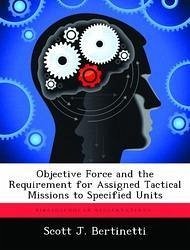This monograph assesses the feasibility of providing tactical units of the U.S. Army's objective force with specific missions other than conventional combat roles. 2002 information pertaining to the objective force only address conventional offensive operations in detail. The purpose of this monograph was to identify deficiencies faced by the objective force conducting stability operations. After identifying those deficiencies, this monograph presents possible solutions to enhance the objective force's ability to accomplish all missions across the spectrum of conflict. The research conducted on this topic looked at two case studies in which conventional army units were given specific missions in support of two different stability operations. The first case study, the U.S. Constabulary, was established in Germany following WWII with the purpose of enforcing law and order within the U.S. Zone of Occupation. The U.S. Constabulary was an organization composed of conventional specialty soldiers assigned to the unit for performing a law enforcement role. The second case study, the British Army in Northern Ireland, examines how British Army units rotate through a tour of duty in Northern Ireland as they provide support to law enforcement services in Northern Ireland. Both case studies analyze the intricacies of the missions they performed in relation to conventional warfare preparedness. The case studies emphasized the importance of using conventional soldiers to execute the mission. This monograph does not advocate the implementation of a military police organization to meet the demands of stability operations. Objective force concept planners appear to have inadequately considered the threat assessments of the CIA, leading authors, and academics. If the planners do not understand the future threat, they cannot accurately predict objective force capabilities and limitations. The U.S. is not expected to be challenged by a peer competitor whom it must a fight a major theat
Hinweis: Dieser Artikel kann nur an eine deutsche Lieferadresse ausgeliefert werden.
Hinweis: Dieser Artikel kann nur an eine deutsche Lieferadresse ausgeliefert werden.








